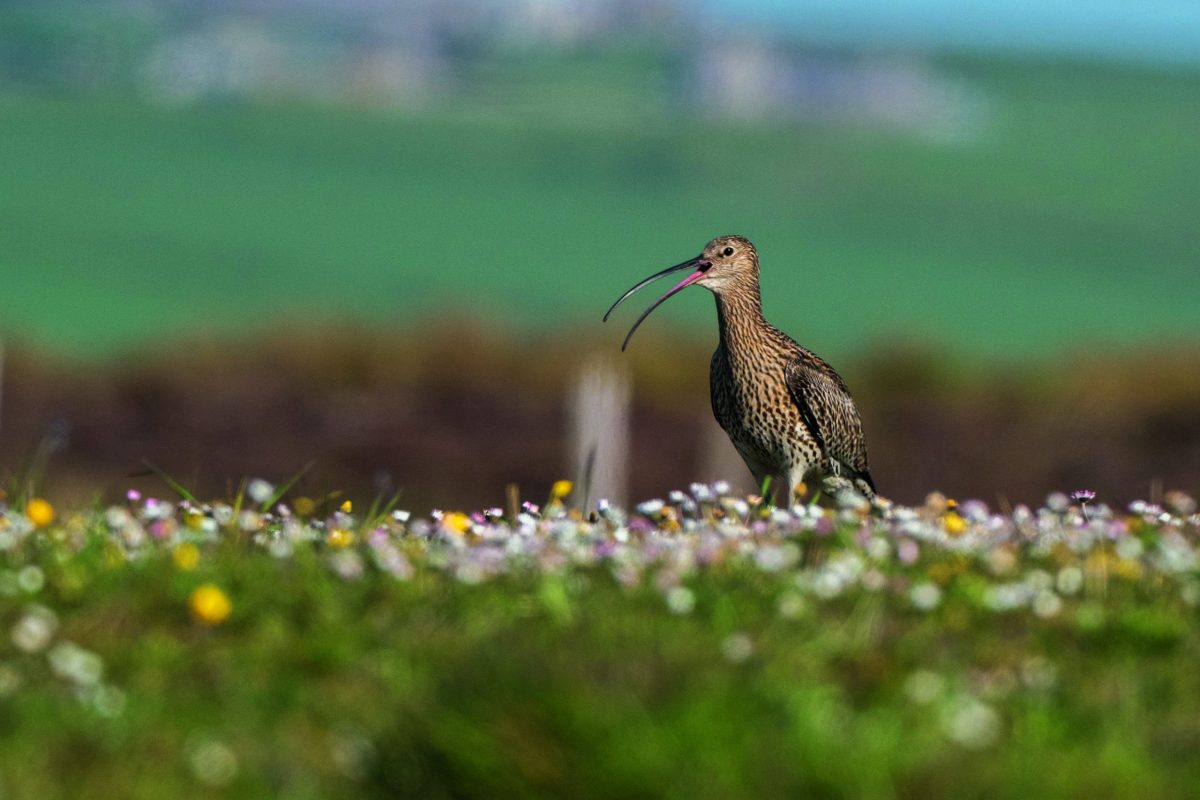Win CENS ProFlex DX5 earplugs worth £1,149 – enter here
Are curlew numbers declining? The suggests they are

Where I farm in Galloway, curlew numbers seem to be declining every year. There are a number of drivers for this collapse, not least the rapid expansion of commercial forestry in our uplands and a dramatic ramping up of grassland management.
During the course of the spring, I set out to run a survey of the birds across a 650km2 river catchment that runs from the Solway Firth into the moorland areas north-west of Dumfries. It was an ambitious project but it seemed like a useful starting point for a bigger push to protect the birds beyond the boundaries of my own farm.
Counting curlew is a tricky business. The birds used to be so abundant here that nobody ever thought to count them before, which made it hard to get a sense
of what was where. At the same time, people generally assume that curlew are common. When I put a letter in the local paper asking people to help with the survey, I received emails asking why I’d bother with curlew when other species required more urgent support.
The reality is that curlew are one of the biggest conservation priorities in the modern countryside, but people aren’t used to thinking about them in those terms.
- Read more about modern conservation efforts in our archives
Curlew numbers – the reality of the decline
One of my first ports of call for the survey was the cattle mart in Castle Douglas. I reckoned that farmers would have a pretty good idea of what was what, so I asked nine farming friends if they had curlew on their land. I was pretty sure that five of them would have curlew and, if the other four didn’t, they might’ve seen birds going around. Every single one of those farmers confirmed that they had curlew and some even laughed at the suggestion that I’d have to ask. “Of course,” they said. “We always have curlew!”
Feeling increasingly silly, I followed up the question by asking if they’d seen the birds back this year. Each man thought about it, appearing puzzled. Come to think of it, four of them said, they hadn’t seen curlew this year. When pressed and with time to think, one of them even reckoned it might’ve been almost 10 years since he’d seen curlew breeding on his land.
The memory was hitched to 100 others and bracketed under the universal “doesn’t time fly”.
That was a useful lesson for me. It seemed like most of the current crop of farmers grew up believing that curlew were an infinite presence in the landscape
– they’d never paused to think of the birds as anything like a reason for concern.
This was one of the first and most resounding obstacles I found during the course of the survey. It’s not that people don’t care about curlew; they simply can’t believe that there’d ever be a problem with a species which was always so abundant. As if to confirm this, of the four farmers who’d lost their curlews, three reckoned “they must’ve gone somewhere else”.
They could not believe that their curlew simply didn’t exist any more. By the time the curlew breeding season ended, I finished with a figure for that 650km2 area — 27 breeding pairs. As we don’t know what we used to have here, the only way I can emphasise it is by saying I can recall a handful of farms inside this same big catchment where 30 pairs were nesting on 30km2 in 2010. We now have an even smaller number in a far bigger area.
The scale of this decline presents a very real challenge for any future conservation plan; the practicalities are a challenge in themselves, but I learned a great deal from working with others on this. It’s fascinating to understand how people perceive change, particularly when those individuals can be both drivers of and remedy for issues such as curlew decline.
If people don’t know there’s a problem with curlew numbers, it’s doubly difficult to make a start.
Related Articles
Get the latest news delivered direct to your door
Subscribe to Shooting Times & Country
Discover the ultimate companion for field sports enthusiasts with Shooting Times & Country Magazine, the UK’s leading weekly publication that has been at the forefront of shooting culture since 1882. Subscribers gain access to expert tips, comprehensive gear reviews, seasonal advice and a vibrant community of like-minded shooters.
Save on shop price when you subscribe with weekly issues featuring in-depth articles on gundog training, exclusive member offers and access to the digital back issue library. A Shooting Times & Country subscription is more than a magazine, don’t just read about the countryside; immerse yourself in its most authoritative and engaging publication.







